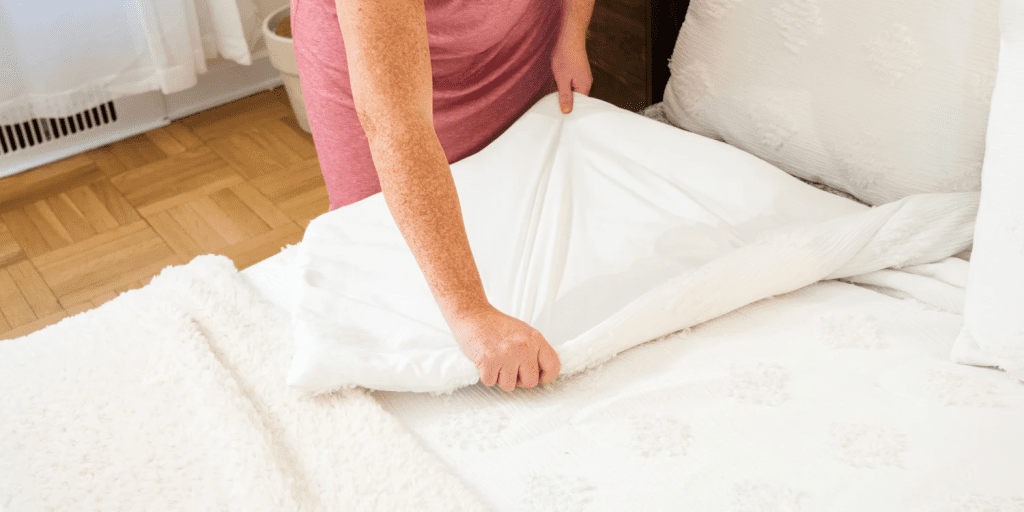We’ve all heard the age-old debate – how often should you really be changing your bed sheets? As it turns out, the answer may be more important than you think. Clean bedding is crucial for maintaining a healthy and comfortable sleeping environment, but many of us fall short when it comes to this essential aspect of home hygiene.

After all, we spend a significant portion of our lives in bed – around one-fourth, to be exact. That’s why it’s so important to ensure our sleeping quarters are as clean and fresh as possible. In this comprehensive guide, we’ll explore the recommended guidelines for changing bed linens and delve into the consequences of neglecting this crucial task.
Adults: The Recommended Frequency for Changing Bed Sheets
For adults, the general recommendation from experts is to change your bed sheets once a week. However, this frequency may need to be increased during the warmer months when sweating is more prevalent. In these cases, changing your sheets twice a week can help ensure a clean and comfortable sleeping environment.
Children: Changing Bed Sheets More Frequently
The same weekly recommendation applies to children, but there may be instances where more frequent changes are necessary. If your child sweats excessively or experiences incidents related to diapers or other accidents, it’s best to change the bed linens more often to maintain a hygienic and odor-free sleeping space.
The Consequences of Infrequent Linen Changes
Neglecting to change your bed sheets regularly can have some unpleasant consequences for your skin and overall health. Here are a few key issues to be aware of:

- Acne Development: If you don’t change your bed linens frequently, they can accumulate skin residues and makeup residues, creating a breeding ground for bacteria. This can lead to unwanted acne breakouts. To prevent this, it’s recommended to change your bed sheets weekly.
- Skin Irritation: Dirty bed linens, filled with bacteria, can cause skin irritation. Continuous contact with unclean linens while sleeping can aggravate the skin, so regular linen changes are crucial for maintaining skin health.
- Risk of Infections: Sweat absorbed by bed linens overnight creates a moist environment that is perfect for the growth of fungi and bacteria. These organisms can lead to various infections, especially for those who experience night sweats. This underscores the importance of sleeping on clean linens.
Proper Washing of Bed Linens
Washing your bed linens properly is just as important as changing them regularly. Here are a few tips for ensuring a thorough clean:
- Use Appropriate Detergents: Make sure you use a detergent suitable for the fabric and color of your bed linens.
- Correct Temperature Settings: Use the right temperature setting for the fabric. Higher temperatures can be effective for white or heavily soiled linens, but cooler temperatures are better for preserving color and reducing energy consumption.
- Avoid Fabric Softeners for Certain Materials: Some fabrics, such as those with moisture-wicking properties, should not be washed with fabric softeners, as they can reduce the effectiveness of these features.
- Dry Properly: Make sure your bed linens are thoroughly dried before using them again. You can either use a dryer or air-dry them, depending on the fabric.
By following these washing tips, you can ensure that your bed linens are not only clean but also well-maintained and long-lasting.

Maintaining clean bedding is crucial for both health and hygiene. Whether it’s weekly changes for adults or more frequent changes for children and during the summer months, adhering to these guidelines is essential. By changing and washing your bed linens properly, you can prevent skin issues, infections, and create a comfortable and healthy sleeping environment.
So, don’t neglect your bed linens – they play a vital role in your overall well-being and the quality of your sleep. Make it a priority to keep your sleeping space fresh, clean, and conducive to a good night’s rest.


